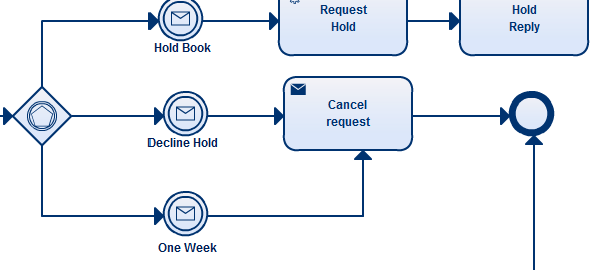In some of our previous article we discussed about what is business process modeling and business process modeling techniques. In this final article of the series we’ll be talking about the importance of business process modeling.
(1) Align Operations with New Business Strategy
Implementing or modifying a business strategy usually requires changes to operations and people performing the work. And by nature people resist change. So the processes, rules and the personal involved in the old strategy can have a impact on the new strategy.
Business Process Modeling facilitates this by :
- By helping managers and executives maintain consistency across processes while keeping an eye on the overall strategy of the organization
- By ensuring that the operational tasks and activities performed by the team members actually help the organization implement its strategy. If the processes and the strategies are not aligned it usually leads to failure in execution. Because even if the operational tasks are performed correctly, the overall organizational goals are not achieved.
- Implement Business Process Re-engineering (BPR) by understanding the existing processes and changing them for improved performance – Business process analysis helps in identifying bottlenecks and inefficiencies in the processes and thus improving them.
- Enable Process Agility, an ability to change and communicate processes quickly to take advantage of new business opportunities or address business challenges.

Business process models help to visualize the processes to make better decision
(2) Improve Process Communication
One area that distinguishes successful businesses and teams is that they have a very clear idea of what they are supposed to do, how they are supposed to do it and what is the exact role of every team member. Clear communication of the operational processes is critical to facilitate a smooth functioning of a team.
Business Process Modeling enables the documenting and communicating of the organizations business processes:
- Process modeling offers a common unified language and methodology for communicating processes and information about processes and decision rules.
- It is ideal for training of new people and rapid knowledge transfer because with a thoroughly documented process any new team member can be very quickly trained on what they have to do in any situation that they may face.
- Minimizes potential danger of loss of staff resulting in loss of business process knowledge.
- It helps business managers communicate their ideas quickly and clearly.
- Jump-starts the organizational process documentation initiative.
- Turns the team’s experience into documented processes.
(3) Increase Control and Consistency
Organizations and companies that succeed are ones that ensure their business processes and rules are well designed and that they are consistently applied the same way every single time. This process control and consistency is the key success in any organization.
Business Process Modeling makes this possible by helping:
- Formalize existing processes which may not be well documented or which have evolved over time into “informal knowledge”.
- Execute a process in consistent manner because instead of relying on people to remember to do the right thing the documented process can be given to the business users.
- Make better decisions because guesswork is eliminated as business users can have the documented business rules in front of them.
- Handle exceptions faster and in a better way.
- Complete regulatory compliance by ensuring that the documented processes follow the company guidelines and legal regulations.
- Put business people in charge.
- Support compliance initiatives such as Six Sigma, ISO 9000
(4) Improve Operational Efficiency
- In today’s business environment, every business and every manager wants to ensure that they are achieving the best possible results with the resources available to them. There is no room for inefficiencies and wastage.
- The Process simulation and analysis steps of Business Process Modeling are critical tools for managers and analysts to ensure that their processes are optimized and are running accurately.
- Process Simulation allows analysis and understanding of the process flows and helps managers know if there is room for further optimization and efficiencies.
- It helps spot needed improvements and reduce process cycle time.
- It increases productivity of existing resources and staff and so allows the team to do more with less.
- It facilitates risk free experimentation and encourages exchange of process improvement ideas.
- Process simulation allows modeling of process designs before actually implementing them thus minimizing disruptions.
- It encourages a mind-set of continually optimizing business critical processes to incrementally improve operational efficiency.
- Process analysis enables better resource utilization.
(5) Gain Competitive Advantage
All the benefits mentioned above lead to a significant competitive advantage for an organization that has invested the time and effort to document, simulate and improve its business processes.
Studies of many wildly successful companies has often shown that they succeeded not only because of better ideas or better business models. But also because they constantly refined and improve their processes through business process modeling.
A slight improvement in one activity here and another one there leads to an overall better process. And those little refinements help organizations run efficiently and give the edge over their competitors.
The above points highlight the importance of business process modeling to an organization. And this marks the end of the series of articles we shared on business process modeling.
We sincerely hope that it had helped improving your knowledge on BPM and that you would put the knowledge gained, in to practice. And we have professionally designed business process modeling templates for you get started fast as well. Click here to start creating any complex BPMN diagram.
As always if you have any questions feel free to ask them in the comments section.




